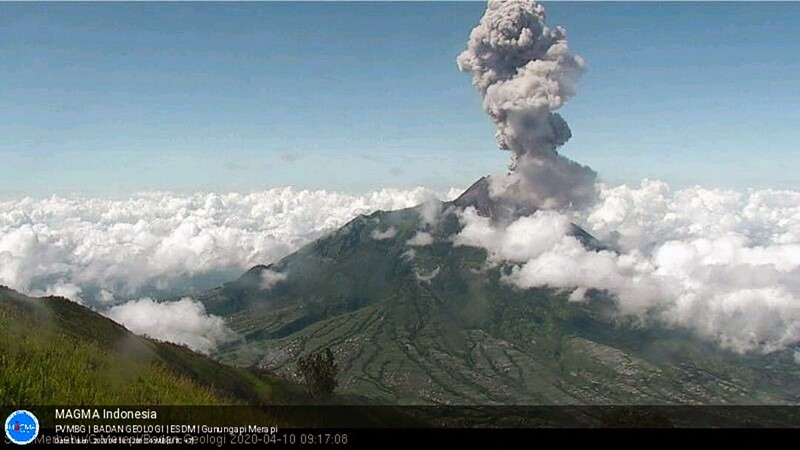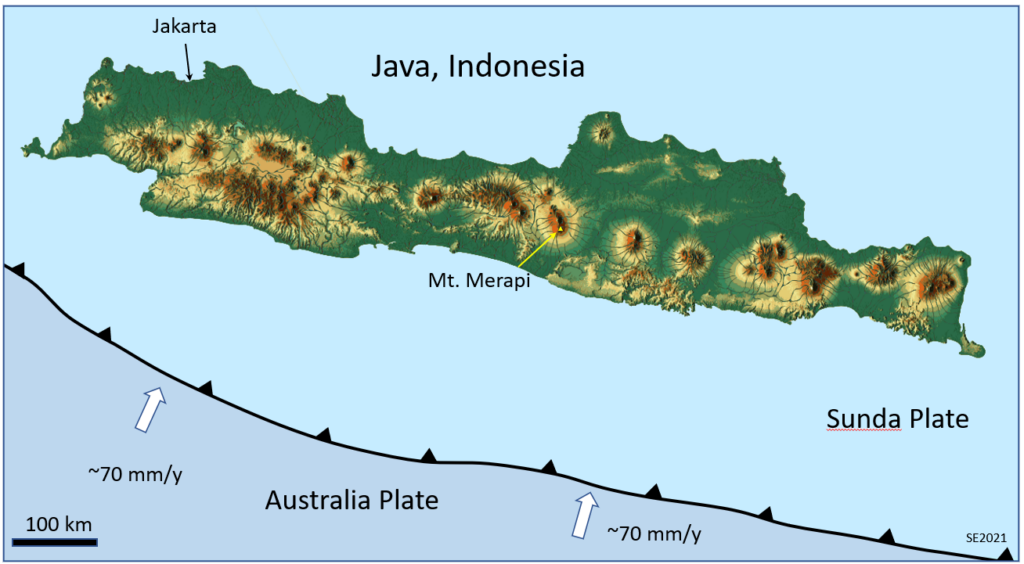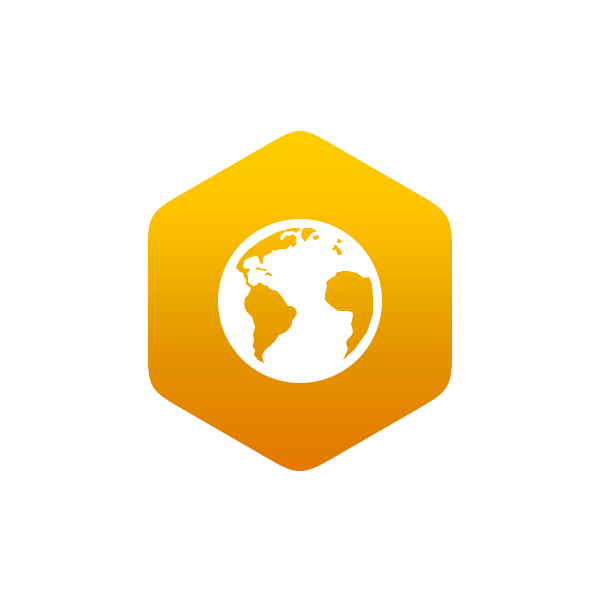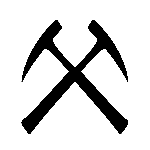7: Volcanism
- Page ID
- 25487
\( \newcommand{\vecs}[1]{\overset { \scriptstyle \rightharpoonup} {\mathbf{#1}} } \)
\( \newcommand{\vecd}[1]{\overset{-\!-\!\rightharpoonup}{\vphantom{a}\smash {#1}}} \)
\( \newcommand{\dsum}{\displaystyle\sum\limits} \)
\( \newcommand{\dint}{\displaystyle\int\limits} \)
\( \newcommand{\dlim}{\displaystyle\lim\limits} \)
\( \newcommand{\id}{\mathrm{id}}\) \( \newcommand{\Span}{\mathrm{span}}\)
( \newcommand{\kernel}{\mathrm{null}\,}\) \( \newcommand{\range}{\mathrm{range}\,}\)
\( \newcommand{\RealPart}{\mathrm{Re}}\) \( \newcommand{\ImaginaryPart}{\mathrm{Im}}\)
\( \newcommand{\Argument}{\mathrm{Arg}}\) \( \newcommand{\norm}[1]{\| #1 \|}\)
\( \newcommand{\inner}[2]{\langle #1, #2 \rangle}\)
\( \newcommand{\Span}{\mathrm{span}}\)
\( \newcommand{\id}{\mathrm{id}}\)
\( \newcommand{\Span}{\mathrm{span}}\)
\( \newcommand{\kernel}{\mathrm{null}\,}\)
\( \newcommand{\range}{\mathrm{range}\,}\)
\( \newcommand{\RealPart}{\mathrm{Re}}\)
\( \newcommand{\ImaginaryPart}{\mathrm{Im}}\)
\( \newcommand{\Argument}{\mathrm{Arg}}\)
\( \newcommand{\norm}[1]{\| #1 \|}\)
\( \newcommand{\inner}[2]{\langle #1, #2 \rangle}\)
\( \newcommand{\Span}{\mathrm{span}}\) \( \newcommand{\AA}{\unicode[.8,0]{x212B}}\)
\( \newcommand{\vectorA}[1]{\vec{#1}} % arrow\)
\( \newcommand{\vectorAt}[1]{\vec{\text{#1}}} % arrow\)
\( \newcommand{\vectorB}[1]{\overset { \scriptstyle \rightharpoonup} {\mathbf{#1}} } \)
\( \newcommand{\vectorC}[1]{\textbf{#1}} \)
\( \newcommand{\vectorD}[1]{\overrightarrow{#1}} \)
\( \newcommand{\vectorDt}[1]{\overrightarrow{\text{#1}}} \)
\( \newcommand{\vectE}[1]{\overset{-\!-\!\rightharpoonup}{\vphantom{a}\smash{\mathbf {#1}}}} \)
\( \newcommand{\vecs}[1]{\overset { \scriptstyle \rightharpoonup} {\mathbf{#1}} } \)
\( \newcommand{\vecd}[1]{\overset{-\!-\!\rightharpoonup}{\vphantom{a}\smash {#1}}} \)
\(\newcommand{\avec}{\mathbf a}\) \(\newcommand{\bvec}{\mathbf b}\) \(\newcommand{\cvec}{\mathbf c}\) \(\newcommand{\dvec}{\mathbf d}\) \(\newcommand{\dtil}{\widetilde{\mathbf d}}\) \(\newcommand{\evec}{\mathbf e}\) \(\newcommand{\fvec}{\mathbf f}\) \(\newcommand{\nvec}{\mathbf n}\) \(\newcommand{\pvec}{\mathbf p}\) \(\newcommand{\qvec}{\mathbf q}\) \(\newcommand{\svec}{\mathbf s}\) \(\newcommand{\tvec}{\mathbf t}\) \(\newcommand{\uvec}{\mathbf u}\) \(\newcommand{\vvec}{\mathbf v}\) \(\newcommand{\wvec}{\mathbf w}\) \(\newcommand{\xvec}{\mathbf x}\) \(\newcommand{\yvec}{\mathbf y}\) \(\newcommand{\zvec}{\mathbf z}\) \(\newcommand{\rvec}{\mathbf r}\) \(\newcommand{\mvec}{\mathbf m}\) \(\newcommand{\zerovec}{\mathbf 0}\) \(\newcommand{\onevec}{\mathbf 1}\) \(\newcommand{\real}{\mathbb R}\) \(\newcommand{\twovec}[2]{\left[\begin{array}{r}#1 \\ #2 \end{array}\right]}\) \(\newcommand{\ctwovec}[2]{\left[\begin{array}{c}#1 \\ #2 \end{array}\right]}\) \(\newcommand{\threevec}[3]{\left[\begin{array}{r}#1 \\ #2 \\ #3 \end{array}\right]}\) \(\newcommand{\cthreevec}[3]{\left[\begin{array}{c}#1 \\ #2 \\ #3 \end{array}\right]}\) \(\newcommand{\fourvec}[4]{\left[\begin{array}{r}#1 \\ #2 \\ #3 \\ #4 \end{array}\right]}\) \(\newcommand{\cfourvec}[4]{\left[\begin{array}{c}#1 \\ #2 \\ #3 \\ #4 \end{array}\right]}\) \(\newcommand{\fivevec}[5]{\left[\begin{array}{r}#1 \\ #2 \\ #3 \\ #4 \\ #5 \\ \end{array}\right]}\) \(\newcommand{\cfivevec}[5]{\left[\begin{array}{c}#1 \\ #2 \\ #3 \\ #4 \\ #5 \\ \end{array}\right]}\) \(\newcommand{\mattwo}[4]{\left[\begin{array}{rr}#1 \amp #2 \\ #3 \amp #4 \\ \end{array}\right]}\) \(\newcommand{\laspan}[1]{\text{Span}\{#1\}}\) \(\newcommand{\bcal}{\cal B}\) \(\newcommand{\ccal}{\cal C}\) \(\newcommand{\scal}{\cal S}\) \(\newcommand{\wcal}{\cal W}\) \(\newcommand{\ecal}{\cal E}\) \(\newcommand{\coords}[2]{\left\{#1\right\}_{#2}}\) \(\newcommand{\gray}[1]{\color{gray}{#1}}\) \(\newcommand{\lgray}[1]{\color{lightgray}{#1}}\) \(\newcommand{\rank}{\operatorname{rank}}\) \(\newcommand{\row}{\text{Row}}\) \(\newcommand{\col}{\text{Col}}\) \(\renewcommand{\row}{\text{Row}}\) \(\newcommand{\nul}{\text{Nul}}\) \(\newcommand{\var}{\text{Var}}\) \(\newcommand{\corr}{\text{corr}}\) \(\newcommand{\len}[1]{\left|#1\right|}\) \(\newcommand{\bbar}{\overline{\bvec}}\) \(\newcommand{\bhat}{\widehat{\bvec}}\) \(\newcommand{\bperp}{\bvec^\perp}\) \(\newcommand{\xhat}{\widehat{\xvec}}\) \(\newcommand{\vhat}{\widehat{\vvec}}\) \(\newcommand{\uhat}{\widehat{\uvec}}\) \(\newcommand{\what}{\widehat{\wvec}}\) \(\newcommand{\Sighat}{\widehat{\Sigma}}\) \(\newcommand{\lt}{<}\) \(\newcommand{\gt}{>}\) \(\newcommand{\amp}{&}\) \(\definecolor{fillinmathshade}{gray}{0.9}\)After having carefully read this chapter and completed the exercises within it and the questions at the end, you should be able to:
- Explain the relationships between plate tectonics and the formation of magma and volcanism,
- Describe the range of magma compositions formed in differing tectonic environments, and discuss the relationship between magma composition (and gas content) and eruption style,
- Explain the geological and eruption-style differences between different types of volcanoes, especially shield volcanoes, composite volcanoes and cinder cones,
- Understand the types of hazards, to people and to infrastructure, posed by the different types of volcanic eruptions,
- Describe the symptoms that we can expect to observe when a volcano is ready to erupt, and the techniques that we can use to monitor those symptoms and predict eruptions,
- Understand why so many humans have chosen to live near to volcanoes and some of the other attractions of volcanoes, and
- Describe some of the ways that volcanic eruptions contribute to Earth systems.
- 7.1: Plate Tectonic Settings of Volcanism
- This page outlines the relationship between volcanism and plate tectonics, detailing processes at divergent boundaries (decompression melting), convergent boundaries (flux melting from subduction, e.g., Mt. St. Helens), and mantle plumes (e.g., Hawaii). It also notes that some areas, like northwestern British Columbia, experience volcanism due to crustal stress rather than fitting strictly into these categories.
- 7.2: Magma Composition and Eruption Style
- This page discusses the variability of magma composition across different volcanic settings, highlighting that mafic magma is found at divergent boundaries and oceanic plumes, while felsic magma originates in subduction zones. It explains how processes such as partial melting and crystal settling contribute to magma chamber zonation.
- 7.3: Types of Volcanism
- This page provides a detailed overview of various types of volcanism, including cinder cones, composite volcanoes, shield volcanoes, large igneous provinces, sea-floor volcanism, and kimberlites. It highlights their tectonic settings, sizes, magma characteristics, and eruption styles.
- 7.4: Volcanic Hazards
- This page outlines volcanic hazards, differentiating between direct hazards that harm people and property immediately and indirect hazards that cause long-term environmental issues. It discusses various hazards like tephra emissions and lahars, mentioning historical eruptions that led to fatalities. The text highlights the risks posed by Mt. Rainier, including mudflows and the use of sensors for alerts. It contrasts lava flows from Kilauea and Mt. Nyiragongo and concludes with hazards near Mt.
- 7.5: Monitoring Volcanoes and Predicting Eruptions
- This page discusses the six key signs of a possible volcanic eruption identified by geologist Chris Newhall in 2005: gas leaks, bulges, increased and decreased seismic activity, physical deformation, and steam eruptions. It emphasizes the importance of monitoring these signs with advanced technology, such as seismometers and gas detection instruments, to improve eruption prediction and risk reduction.
- 7.6: Effects of Volcanic Eruptions on Humans and on Earth Systems
- This page discusses the attraction of humans to volcanic regions due to fertile soil that supports agriculture and high population densities. It highlights the scenic beauty and geothermal energy potential of these areas, but also warns of the risks posed by potential eruptions. Additionally, it emphasizes the role of volcanism in cycling materials and influencing Earth's climate and ecosystems. Overall, while volcanic regions offer numerous opportunities, they also come with significant dangers.
- 7.7: Chapter 7 Summary and Questions for Review
- This page explores the relationship between plate tectonics and volcanism, including magma formation, volcano types, eruption styles, and associated hazards. It examines how eruptions affect both human life and Earth systems, stressing the dual nature of volcanic activity. Additionally, review questions promote a deeper understanding of tectonic influences, magma characteristics, and volcanic impacts on the environment and society.
A volcanic eruption is what happens when magma comes to surface. A volcano forms where there have been repeated eruptions at the same location over at least months—in the case of some small cinder cones—or for tens of thousands to a few million years for larger volcanoes. Eruptions can take place on the ocean floor (or even under the water of lake), in which case they are called sub-aqueous eruptions, or they can take place on land, where they are called sub-aerial eruptions. Not all volcanic eruptions produce the volcanic mountains with which we are familiar; in fact most of the Earth’s volcanism takes place along the sea-floor spreading ridges and does not produce volcanic mountains at all—not even sea floor mountains.
Indonesia has one of the greatest concentrations of volcanoes on Earth, and Indonesia’s most active volcano is Mt. Merapi, which started erupting again in December 2020 and continued into early 2021 (Figure 7.0.1). Mt. Merapi has had a significant eruption 74 times over the past 473 years, or once every 6 years on average. That is quite exceptional for a volcano of this type, most of which erupt only a few times a century, many much less than that.


The study of volcanoes is critical to our understanding of the geological evolution of the Earth. Volcanism has contributed significantly to our oceans, atmosphere, and biosphere, and has also had (and still has) significant implications for climate and climate change. Perhaps most important of all, understanding volcanic eruptions allows us to save lives and property. Over the past few decades, volcanologists have made great strides in their ability to forecast volcanic eruptions and to predict their consequences, and this has already saved thousands of lives.
Media Attributions
- Figure 7.0.1 Mount Merapi Eruption, April 2020, Center for Volcanology and Geological Hazard Mitigation of Indonesia, https://magma.esdm.go.id/v1/gunung-api/gallery, CC BY-NC-ND 4.0
- Figure 7.0.2 Steven Earle, CC BY-SA 4.0, based on Java Relief map by Goren ek-en/OpenStreetMaps, via Wikimedia Commons, https://commons.wikimedia.org/wiki/F...Relief_Map.svg CC BY-SA 4.0


